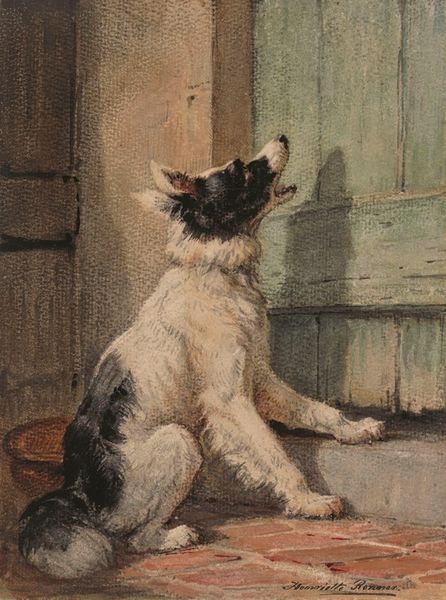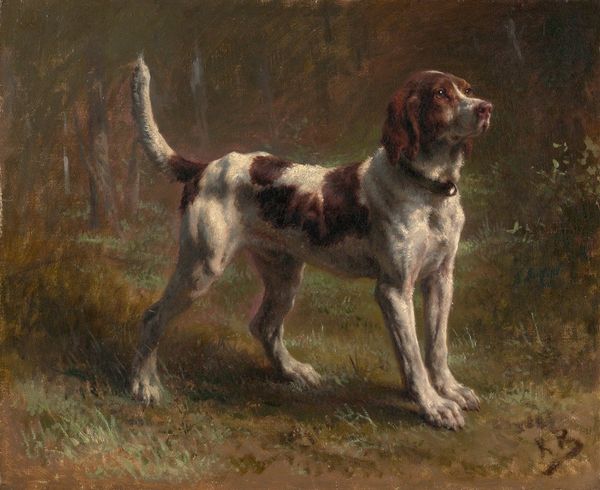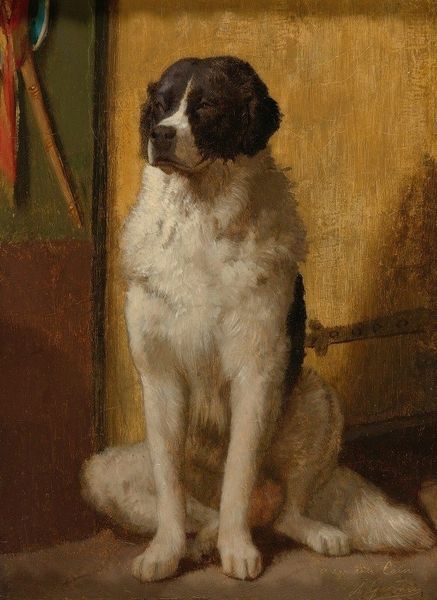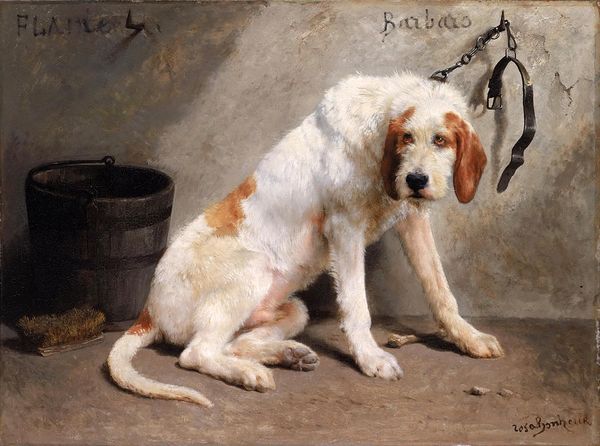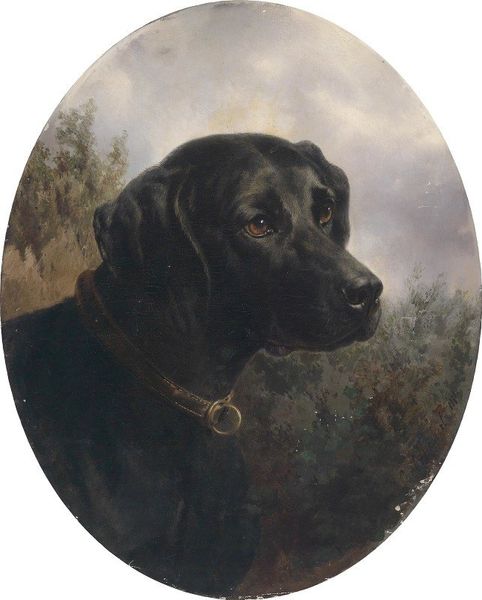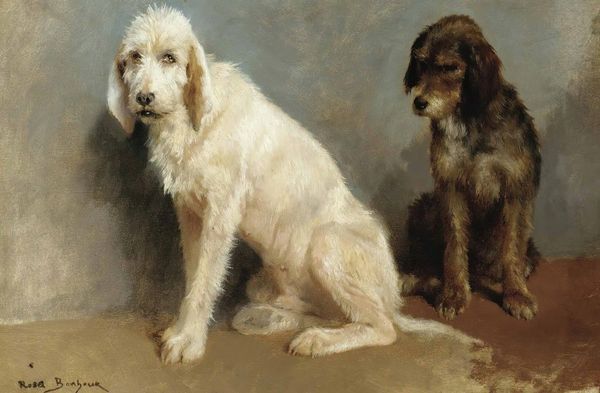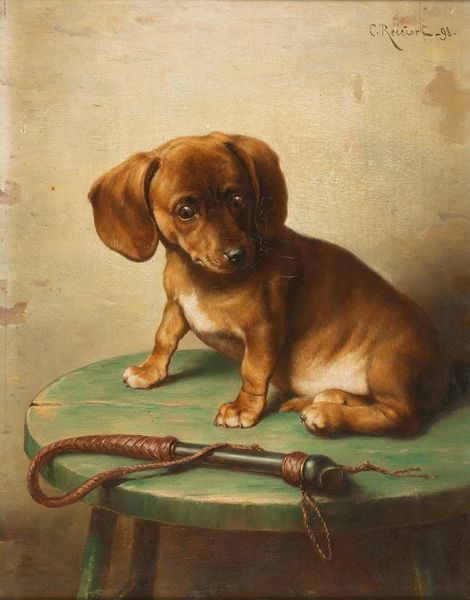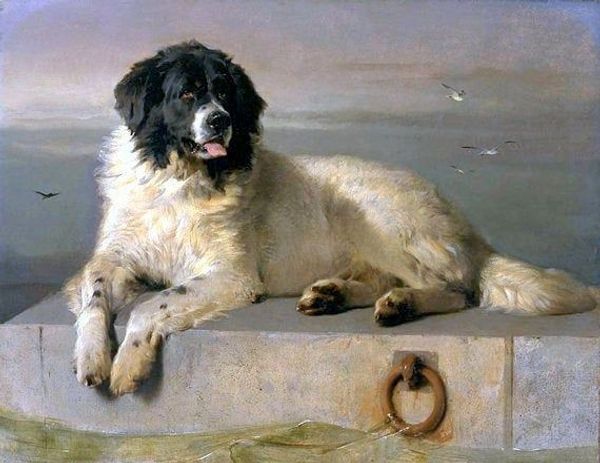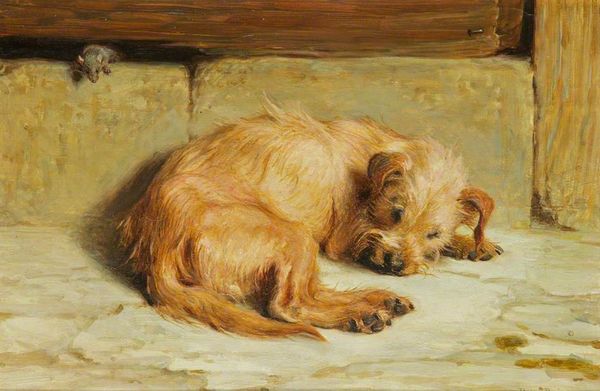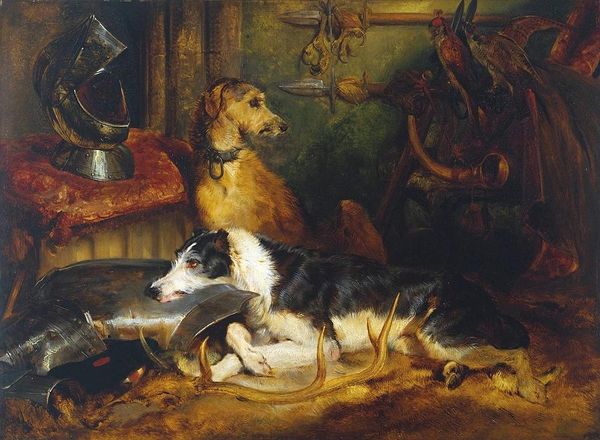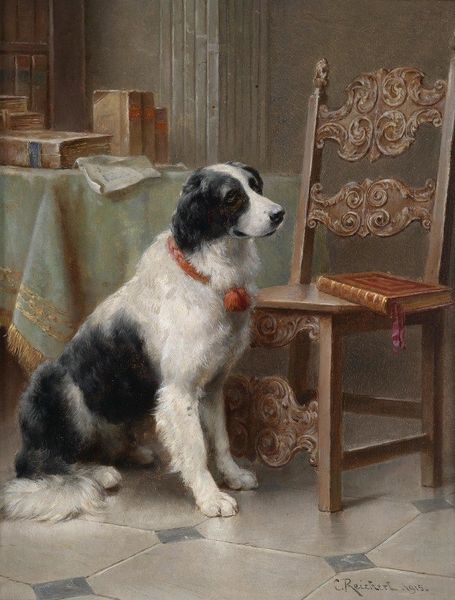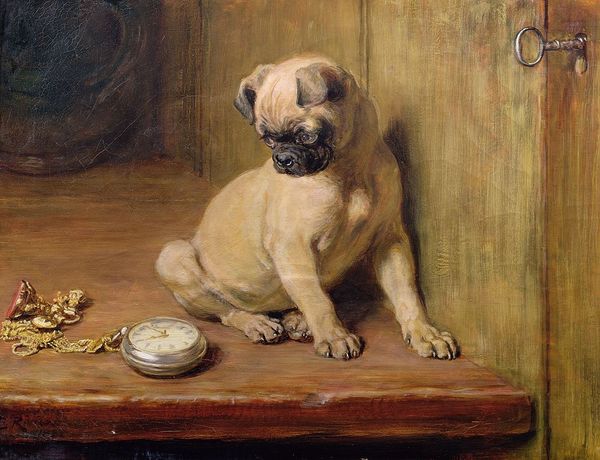
painting, oil-paint
#
gouache
#
animal
#
painting
#
oil-paint
#
landscape
#
oil painting
#
genre-painting
#
realism
Copyright: Public domain
Editor: So, we're looking at "A Dog in a Stable" by Edwin Henry Landseer. It's an oil painting and it looks very lifelike. It's mood seems both domestic and watchful to me. What do you see in this piece, beyond just a dog in a barn? Curator: Well, let's consider Landseer's social context. He was celebrated for his anthropomorphic animal paintings that were extremely popular in Victorian England. What does it mean to give animals human traits? Is this meant to sentimentalize them, or to elevate our understanding of their place in the world? Editor: I guess it's a bit of both? It definitely pulls at your heartstrings, looking at how alert and almost regal the dog looks in its little domain. Curator: Exactly! Now think about the concept of 'domain' and ‘property.’ Landseer was working in a time of rigid class structure. How might this portrayal of animal "character" serve to naturalize a social hierarchy or even legitimize a colonial order, particularly given that pure breeds of dogs were seen as symbols of status? Editor: Wow, I hadn't thought of it like that. I suppose by attributing certain traits to animals – loyalty, bravery, intelligence – one might indirectly reinforce Victorian societal expectations and justify social stratification, drawing parallels between animal breeds and human classes. Curator: Precisely! Moreover, we need to consider the visual construction – the dog is central, alert, a guardian of its "stable." Is Landseer’s painting actually subtly celebrating a kind of subjugation? Does that change your interpretation? Editor: It does! I am now thinking about the power dynamics involved. Before I saw it as an intimate portrayal, but now there are social implications lurking beneath the surface. Thanks for making me look beyond the immediately obvious. Curator: Art provides insight into cultural perspectives, but our own perspectives today also shift how we look at art! Keep digging beneath those surfaces, and the art keeps giving.
Comments
No comments
Be the first to comment and join the conversation on the ultimate creative platform.
